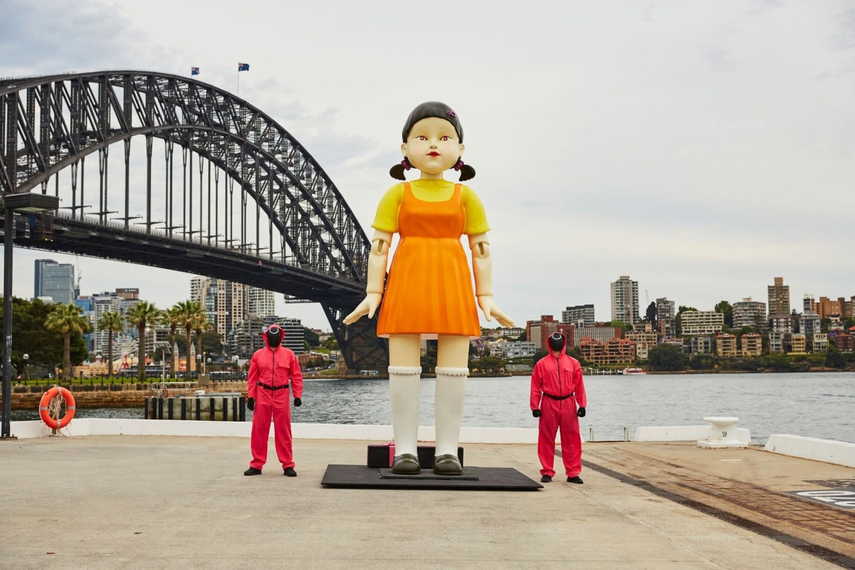
Is it inappropriate for brands to advertise or promote something that's meant for adults in a location and/or manner that's bound to attract the interest of children?
That's what some people are asking after a Netflix activation in Sydney for the hit series Squid Game provoked some reactions online. Campaign Asia-Pacific wants to know what you think. Review the case below and then, when you're ready...
Background: This weekend, Netflix erected a massive version of a doll figure that appears in its blockbuster series Squid Game at the Circular Quay in Sydney. The brand's director of marketing for ANZ proudly touted the activation in a LinkedIn post.
While reaction to Broderick's post was overwhelmingly positive, as measured by likes and claps and other emoji reactions, it also provoked some negative feedback. A few commenters, including some members of the marketing community, argued that such public promotion of an ultra-violent show went too far.
These commenters focused on the plight of parents trying to shield their kids from grown-up content. The fact that the show is based on children's games and iconography seemed to play a role, as some commenters were concerned that kids would find the imagery enticing, leading to difficult questions.




Contacted by Campaign this morning, Stephen Drummond, chief strategy officer at Holmes & Marchant in Shanghai, elaborated on his comment (shown above).
The first episode featured over 200 people being ‘realistically’ executed by sniper while playing a fun playground game. This was not fantasy ‘scare-the-kiddies’ horror story or a Zombie video game, it was intended to traumatize by being realistic.
Bare bones reality is that Squid Game's notoriety comes from combining the innocence of children’s games with execution-porn.
Medium will always be the message. A giant outdoor piece is employed because everyone can see it. By being placed in such a visible public area, people have no choice, it’s unmissable. It was not placed inside an adult venue which would have been fine. It was intentionally placed where family groups are exposed to it.
While we should have the freedom to watch whatever, there also needs to be the freedom to avoid. The message is clearly in your face ‘this is fun for everyone’? Nope. It ain’t. Adults, fine. Kid, nah.
Perhaps it exposes the reality that we now have marketers who believe in ‘Fuck you, as long as I get a higher clickthrough’.
On LinkedIn, others defended the work and questioned where an advertiser's responsibility lies, versus that of a parent.


Campaign Asia-Pacific would like to know what you think—about Netflix's doll (which also appeared in Seoul) and about the broader issue of marketing adult fare in public. Please take our quick spot survey, which includes a few multiple-choice questions and some open-ended questions so you can share your thoughts directly.
Thank you in advance! We'll publish the results in a few days.
(This article first appeared on CampaignAsia.com)



.jpg&h=268&w=401&q=100&v=20250320&c=1)
.jpg&h=268&w=401&q=100&v=20250320&c=1)
.jpg&h=268&w=401&q=100&v=20250320&c=1)
.jpg&h=268&w=401&q=100&v=20250320&c=1)

.jpg&h=268&w=401&q=100&v=20250320&c=1)

.png&h=268&w=401&q=100&v=20250320&c=1)
